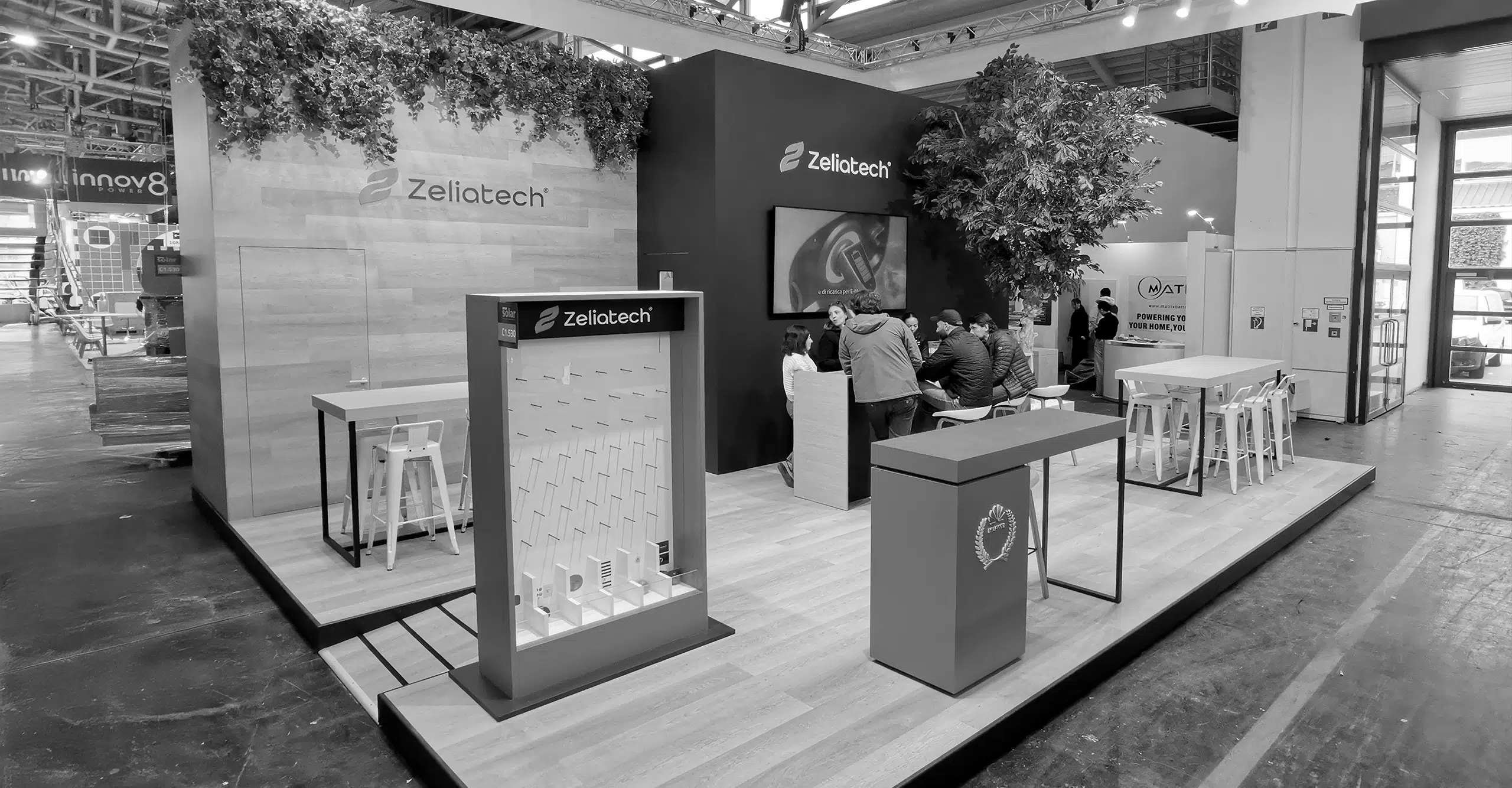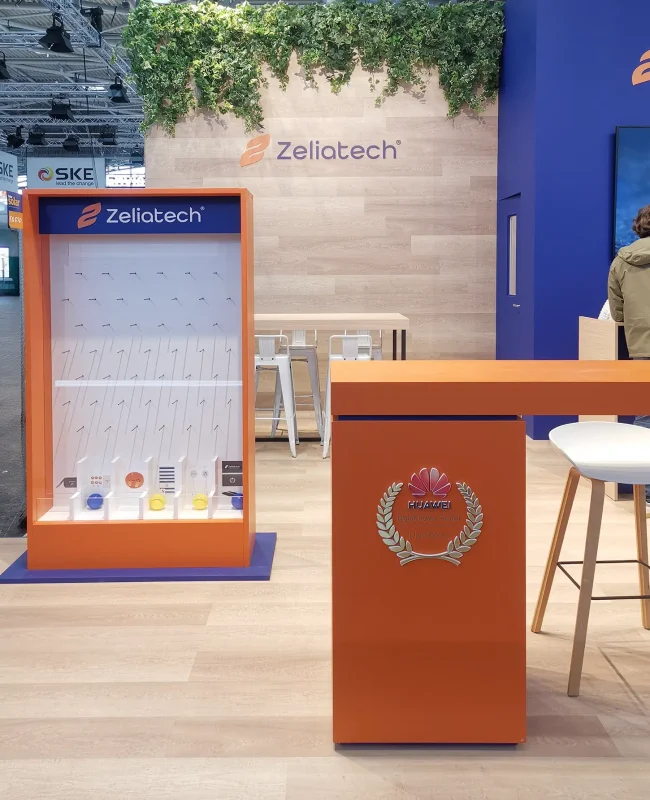Exhibition spaces and activations: engaging customers through interactive experiences

Why "setting up" is no longer enough
In the contemporary trade fair context, exhibition space has long ceased to be just a showcase. Today, a brand at a trade fair is not simply called upon to “showcase” but to engage. . In a context overloaded with visual stimuli, the real challenge is not to be seen but to be remembered.
The public has changed: they are more informed, less patient, and much more selective. For brands, this means abandoning the passive approach of exhibition in favor of active storytelling.. This is where activations come into play: tools designed to transform the visit into an experience and the stand into a true relational medium.
What are activations at trade shows really?
In Espositiva’s design language, we use the term activations to refer to all those experiences—physical or digital—that actively engage visitors and stimulate interaction.
We are talking about personalized games, sensory experiences, touch installations, immersive environments, and interactive demos. Light years away from passive content, these activations attract attention, stimulate curiosity, and create a real connection with the brand.
“We design and create physical and digital games, integrating them with the exhibition layout and your brand’s language” – Espositiva
In the B2B world, where competition is based on the perception of competence, reliability, and innovation, a well-constructed activation becomes a powerful tool for differentiation and positioning.

Activation = Relationship: the new role of the booth
Good activation works on three basic levers:
- Emotion: stimulates surprise, curiosity, play, gratification
- Participation: actively involves the visitor, turning them into protagonists
- Memorability: creates a concrete, sharable memory, often even online
Studies and data confirm that the visitor involved in an interactive activity tends to:
- stay longer in the booth
- more easily remember the brand
- Be more inclined to leave their contacts
It is not just about aesthetics, but about behavioral strategy.
Case study: Zeliatech and the Plinko


For the brand Zeliatech, active in the field of environmental technologies, Espositiva designed a tailor-made activation: an analog Plinko game, fully customized.
The goal was twofold:
- Increase the flow of visitors in the booth
- Collect leads in a natural and non-intrusive way
The operation was simple and effective: the visitor would drop a ball in the Plinko facility and, depending on the random route, he would get a prize. To participate, he would leave his contact information.
What looked like a game was actually a mechanism for engagement and conversion seamlessly integrated into the stand. The result? A constant queue, a playful and innovative brand perception, and a highly qualified lead database.
Learn more about this topic by visiting the page Games and Activations
The 5 rules for designing effective activations
Brand Consistency
Activation must be a projection of corporate identity, not just entertainment.
Clear objective
Lead generation, awareness, product launch? Each activation must respond to a concrete purpose.
Integration with space
The game or experience must merge with the booth, not come across as an external element. Layout, flow, materials must be harmonious.
Ease of use and human presidium
Good activation is intuitive, but it works only if it is manned by trained staff and integrated into the reception flow.
Return mechanism
Each activation should generate a useful lead: a lead, an insight, a social share, a conversation.
From design to strategy: when activation makes a difference
More and more leading companies are choosing to invest in activations because they understand that today the booth is a strategic tool, not just a container.
Exhibitive integrates activations as early as the concept stage, in close collaboration with brand managers, architects and designers. Every element is taken care of: from the message to the mechanism, from aesthetics to logistics.
“We operate in major European exhibition centers, fully managing all logistical, organizational and authorization aspects” – Exhibitive
Conclusions: the booth as an experience
A booth that works today is a space that is alive, which speaks, which engages, which is remembered. Activations are not a creative frill, but highly effective experiential marketing tools.
In the future of B2B trade shows, those who can truly activate their spaces will emerge as brands capable not only of exhibiting, but of dialogue, engage, transform each visit into a lasting memory.
FAQ - Fair Activations
1. What exactly is meant by “activation” in an exhibition booth?
An activation is an experience designed to actively engage the visitor. It can be a game, an interactive demo, a sensory or digital experience, but always aimed at generating attention, participation and recall. Its goal is to create a meaningful relationship between brand and audience.
2. What is the difference between a game and an activation?
A game can be an activation, but not all activations are games. The difference is in the underlying strategic design: an activation is designed to meet precise marketing objectives (lead generation, brand awareness, positioning), integrating with brand identity and spaces.
3. Why do activations work better than simple product exposure?
Because they activate emotion, attention and engagement. Visitors are more likely to remember a lived experience than a static message. In a competitive environment like a trade show, standing out increasingly comes through what you experience, not just what you show.
The cost depends on several factors: complexity of the idea, materials, technology, customization, and number of fairs where it will be replicated. Espositiva offers tailor-made solutions that are scalable and always consistent with the client’s budget and goals.
5. How is an activation integrated with the exhibition booth?
From the concept stage. Activation is designed as an integral part of the booth layout: in flows, materials, visual and narrative language. This ensures consistency and maximum effectiveness, avoiding out-of-context “gadget” effects.
6. Is it possible to collect leads through activations?
Yes, and that is one of the main goals. Well-designed activations create moments of exchange where the visitor is willing to leave their information in exchange for a valuable experience or content.
7. What are the areas where activations work best?
All those where the brand needs to communicate value, technology or experience. From environmental technologies (such as Zeliatech) to food, from design to pharma. The key is always alignment between activation and brand identity.
With Espositiva, every space
becomes an extraordinary experience.